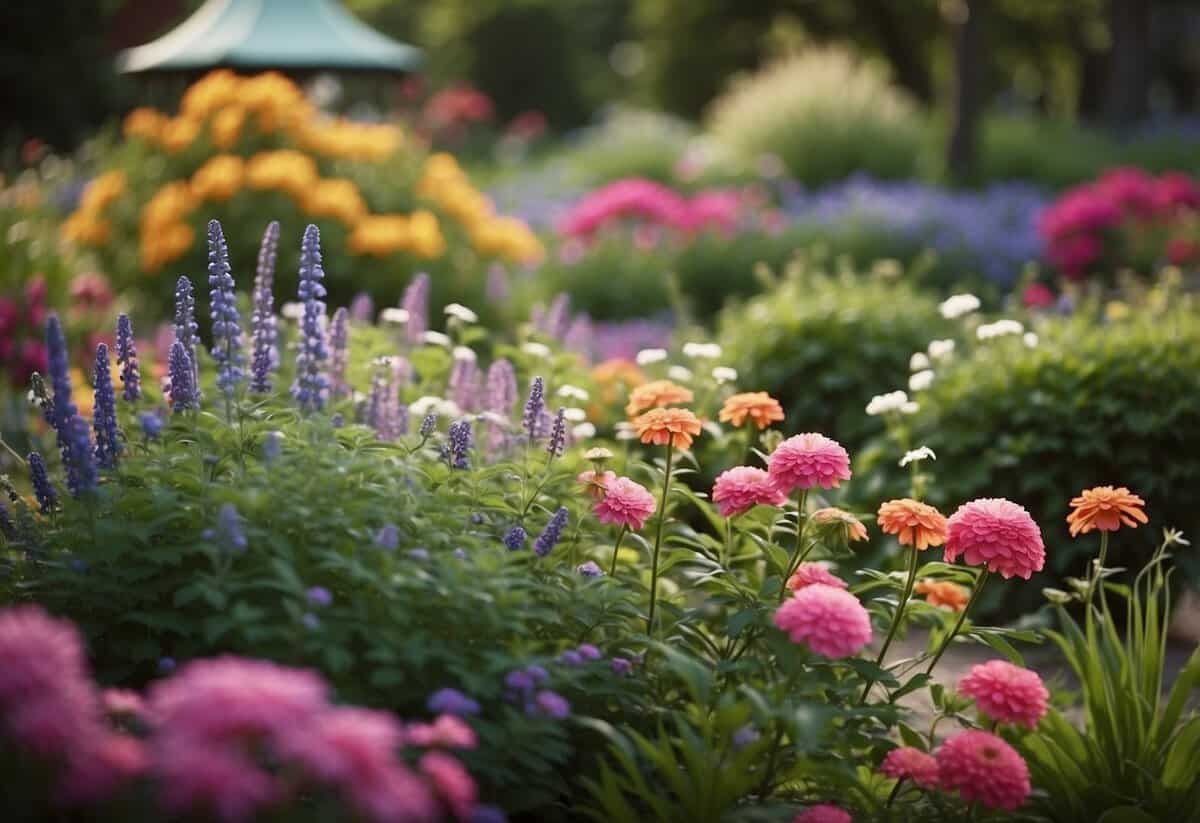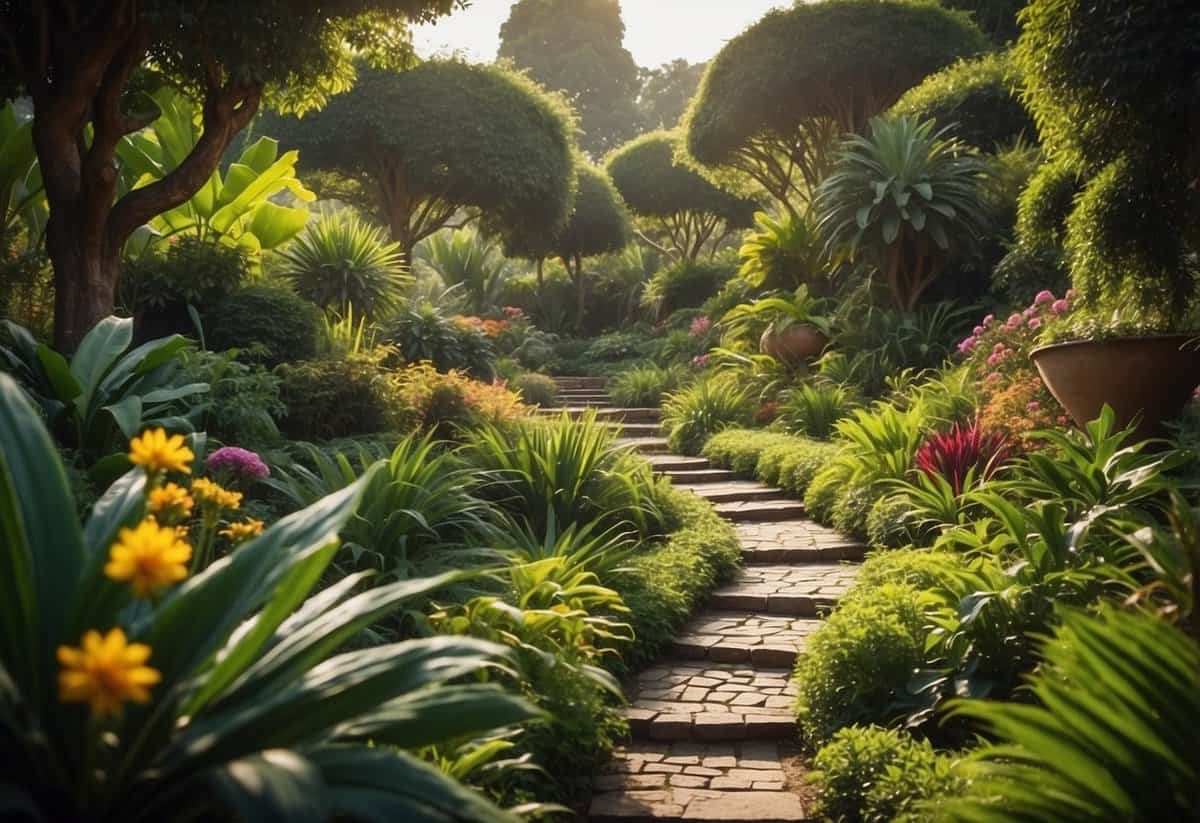What is the Most Beautiful Garden in the World? Discover Stunning Global Gems
Imagine walking through arbors covered in colorful flowers, each step bringing you closer to nature’s tranquility. One of the most beautiful gardens you must visit is Keukenhof Gardens in Lisse, Netherlands. Known as the Garden of Europe, it’s the largest public flower garden in the world, featuring over seven million tulips, daffodils, and hyacinths spread across 80 acres.

If you’re a fan of art and history, Claude Monet’s Garden in Giverny, France, will enchant you. Here, you can admire the same water lilies and wisteria-covered bridges that inspired the famous artist. Each section of the garden feels like stepping into one of Monet’s paintings, offering a peaceful retreat from the bustle of daily life.
For a unique experience, visit the Butchart Gardens in Victoria, British Columbia. This once-abandoned quarry has been transformed into a stunning oasis with lush greenery and vibrant flowers. Whether you’re wandering through the Sunken Garden or exploring the numerous greenhouses, the beauty of nature will leave you in awe.
Iconic Gardens of Europe

Europe is home to some of the most breathtaking gardens in the world. Two of the most iconic are the Gardens of Versailles in France and the Keukenhof in the Netherlands, each with its own unique history and beauty.
Gardens of Versailles: A Royal Legacy
The Gardens of Versailles are a stunning example of French formal garden design. They were created during the reign of Louis XIV and cover over 800 hectares. Designed by André Le Nôtre, the gardens feature immaculate lawns, grand fountains, and intricately designed flower beds.
One of the most striking elements is the Grand Canal, which stretches over 5.57 kilometers. The Hall of Mirrors and the Orangerie add to the grand atmosphere, housing many exotic plants and citrus trees. Walking through these gardens, you’ll feel the opulence and grandeur that aimed to impress visitors and showcase the power of the French monarchy.
Keukenhof: The Tulip Capital
Keukenhof Gardens, located in Lisse, Netherlands, is often called the Tulip Capital. This garden spans 80 acres and is the world’s largest flower garden. It is famous for its vibrant display of tulips, daffodils, and hyacinths, with over 7 million flower bulbs planted annually.
Keukenhof opens for a brief period each spring, attracting millions of visitors who come to marvel at the colorful, well-organized flower beds and themed gardens. Each year, the garden hosts a Tulip Festival, where you can view an array of tulip varieties and other spring flowers in full bloom, creating a truly picturesque landscape. Whether you’re a flower enthusiast or just looking for a beautiful place to visit, Keukenhof offers a vibrant and unforgettable experience.
Botanical Wonders Around the World

Botanical gardens showcase incredible collections of plants that offer both beauty and knowledge. In this section, you’ll discover the unique features of two renowned botanical gardens.
Royal Botanic Gardens, Kew: A Living Library
The Royal Botanic Gardens, Kew in London is one of the most famous botanical gardens in the world. Spanning 300 acres, Kew Gardens is home to over 50,000 living plants.
You can explore the Palm House, a remarkable greenhouse that simulates a rainforest climate, and the Waterlily House, which is dedicated to aquatic plants. The Temperate House showcases plants from temperate regions around the world.
Kew Gardens is also a UNESCO World Heritage Site. It focuses on plant conservation, conducting extensive research to preserve rare plant species. Plan to spend a full day here to fully appreciate its enormous collection and breathtaking landscapes.
Singapore Botanic Gardens: Tropical Diversity
The Singapore Botanic Gardens offers a unique experience with its tropical environment. Covering 82 hectares, these gardens are also a UNESCO World Heritage Site.
A highlight is the National Orchid Garden, which boasts over 1,000 species and 2,000 hybrids of orchids. Here, you’ll find rare and stunning varieties that are unique to the region.
The Rainforest section contains an ancient forest that is older than the gardens themselves. It provides a glimpse into the native tropical flora. Singapore Botanic Gardens also prioritizes conservation, focusing on the tropical species native to Southeast Asia.
These gardens are ideal for those looking to explore the lush diversity of tropical plants, offering both beauty and educational opportunities.
Garden Masterpieces of North America

North America hosts a variety of stunning gardens, each unique in its charm. From the lush, flower-filled landscapes of Canada to the striking arid beauty in the USA, these gardens offer something special for every visitor.
Butchart Gardens: A Bloom with a View
Located in Victoria, British Columbia, Butchart Gardens is a prime example of horticultural artistry. This garden spans 55 acres and showcases an incredible display of flora. You can stroll through a series of themed gardens, each more enchanting than the last. The Sunken Garden, created from an old quarry, is a highlight with its vibrant blooms and stunning water features.
During the summer, you’ll see diverse flowers in full bloom, including roses, tulips, and daffodils. In the winter, the garden transforms with lights and decorations, making it a year-round attraction. Don’t miss the Italian Garden for its classic ambiance and the Japanese Garden for its calming, zen-like atmosphere.
Desert Botanical Garden: The Beauty of Aridity
Situated in Phoenix, the Desert Botanical Garden captures the essence of desert landscapes. Here, you will find an extraordinary collection of cacti and succulents, showcasing the diversity of plant life that thrives in arid conditions. The garden covers 140 acres and includes trails that lead you through various desert habitats.
Specialized focus gardens, like the agave and cholla cactus sections, highlight unique species and teach you about desert ecology. Educational programs and art displays further enhance your visit. The Garden also holds seasonal events, such as nighttime tours and concerts, making it a lively destination for all ages.
Exotic Gardens of Africa and Asia

In Africa and Asia, you can find some of the most stunning gardens with unique plants and breathtaking landscapes. Discover the floral wonders of Cape Town and Marrakech.
Kirstenbosch National Botanical Garden: Cape Town’s Floral Kingdom
The Kirstenbosch National Botanical Garden in Cape Town, South Africa, is famous for its natural beauty. Nestled on the slopes of Table Mountain, it offers you a chance to see a wide variety of South African flora. Established in 1913, Kirstenbosch has become one of the world’s greatest botanical gardens and was the first garden in the world to be dedicated to a country’s native plants.
You can enjoy walking through different sections, each featuring unique plant species. Be sure to visit the fynbos area, a collection of plants native to the Cape region. The garden also has a spectacular Tree Canopy Walkway, known as the Boomslang, which allows you to walk above the trees and get stunning views of the garden and the surrounding mountains.
Jardin Majorelle: Morocco’s Majorelle Blue
In Marrakech, Morocco, the Jardin Majorelle is celebrated for its striking blue structures and lush plant life. Designed by the French painter Jacques Majorelle in the 1920s, this garden features unique elements like bamboo groves, cacti, and exotic plants from various continents.
The garden is a vibrant oasis in the bustling city. Walking through its winding paths, you’ll come across water fountains, lily-covered ponds, and brightly colored buildings that contrast beautifully with the greenery. The garden also houses the Islamic Art Museum of Marrakech, where you can see a collection of ceramics, textiles, and paintings.
Explore the relaxing environment and soak in the tranquility of this artistically designed garden.
Historical and Cultural Significance

Understanding the importance of the world’s most beautiful gardens requires looking at their historical and cultural roles. These gardens have influenced landscape design, and they have appeared in various forms of art and literature, shaping how we appreciate nature today.
The Influence of Landscape Design
Gardens like the Gardens of Versailles in France and the Villa d’Este in Italy have set high standards for landscape design. The intricate designs and structures of these gardens reflect the tastes and values of the periods in which they were created.
During the reign of King Louis XIV, the Gardens of Versailles became a symbol of royal power and artistic excellence. The precision in their layout influenced garden design across Europe. Similarly, the Villa d’Este in Italy, built during the Renaissance, is famous for its terraces, fountains, and grottos.
These historical gardens still inspire modern landscape design. For example, Jennie Butchart’s transformation of a limestone quarry into the Butchart Gardens in Canada showcases how landscape design can evolve while maintaining historical elements.
Gardens in Art and Literature
Gardens have often appeared in art and literature, serving as sources of inspiration and settings for important narratives. Claude Monet’s garden in Giverny, France, is a prime example. Monet’s water lily series, inspired by his garden, remains some of the most famous artwork in the world.
In literature, gardens have been portrayed as places of peace, reflection, and romance. Shakespeare often used gardens as settings that underscored themes of growth, decay, and renewal.
From ancient texts to modern novels, gardens continue to be rich in symbolism and meaning. Their representation in various forms of media helps us understand the deep connection between humans and nature.







